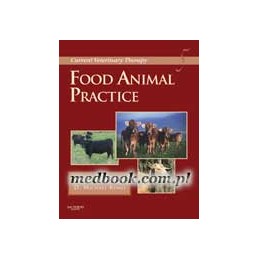Opis
Written by leading food animal researchers, practitioners, and educators, this comprehensive guide provides quick access to the latest medical and surgical interventions for cattle, sheep, and goats. The concise, quick-reference format and logical body systems organization make it ideal for use in both the clinical setting and the field. Youll easily locate key information on preventing, treating, and managing disease in food animals, as well as expert insights on improving outcomes for individual animals and herd populations.
Szczegóły produktu
Indeks
31839
EAN13
9781416035916
ISBN
9781416035916
Opis
Rok wydania
2008
Numer wydania
5
Oprawa
twarda
Liczba stron
736
Wymiary (mm)
216 x 276
Waga (g)
1640
SECTION 1: DIGESTIVE SYSTEM SECTION 2: METABOLIC SYSTEM SECTION 3: RESPIRATORY SYSTEM SECTION 4: CARDIOVASCULAR SYSTEM SECTION 5: MUSCULOSKELETAL SYSTEM SECTION 6: NEUROLOGICAL SYSTEM SECTION 7: URINARY SYSTEM SECTION 8: GENITAL SURGERY - MALE SECTION 9: GENITAL SURGERY - FEMALE SECTION 10: OPHTHALMOLOGY SECTION 11: PHARMACOLOGY AND THERAPEUTICS SECTION 12: CHEMICAL RESTRAINT, GENERAL ANESTHESIA, AND PAIN MANAGEMENT SECTION 13: COW-CALF/SMALL RUMINANT PRODUCTION MEDICINE SECTION 14: FEEDLOT PRODUCTION MEDICINE


 Dostawa
Dostawa
 Płatność
Płatność
 Zwroty
Zwroty
